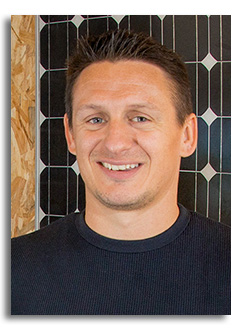
Abstract
The widespread development and deployment of photovoltaic (PV) technologies has been so successful, that PV now provides the cheapest form of new electricity. This has greatly expanded PV applications beyond just providing electricity, to also be considered as a lower-cost option for other sectors including transportation and heating. On the path to net-zero emission by 2050 with 15-60 TW of cumulative installed capacity, the annual production capacity could increase from ~150 GW in 2020 to > 1 TW by 2030. This raises concerns for the deployment of PV across the value chain, from scarce elements like silver, used for the metal contacts of industrial solar cells, to abundant materials like silicon, aluminium, steel, glass and concrete, not only for supply chain and demand issues, but also the emissions generated while refining the raw materials and manufacturing solar panels. This talk will discuss the critical materials of concern for current and future PV deployment and highlight several areas of innovation that could help to ease the impending burden of the materials used today, which is critical to continue progress in reducing CO2 emissions. We also discuss the unique opportunity for futuristic two-terminal tandem devices to reduce silver consumption well below that of PERC.
Click here to see all available video seminars.
Click here to go to the SPREE HOMEPAGE.
Brief Bio
Brett Hallam is an Associate Professor in the School of Photovoltaic and Renewable Energy Engineering (University of New South Wales, Sydney). He was in the fifth batch of students studying the world’s first Bachelor degree dedicated to photovoltaics (Photovoltaic and Solar Energy Engineering, UNSW) graduating with the University Medal. He then completed a PhD in Photovoltaic Engineering (UNSW) on hydrogen passivation and laser doping for silicon solar cells, supervised by the late Professor Stuart Wenham. During this time, he was a consultant for Suntech, and part of the team to develop the world’s first 20% efficient industrial p-type Cz solar cell. He is best known for his work on manipulating hydrogen charge states (advanced hydrogenation) for defect passivation, and development of rapid processes to eliminate LID and LeTID, which he and the UNSW hydrogenation team subsequently commercialised and have been used by LONGi to achieve PERC solar cell efficiencies over 24%. His latest achievements have been the integration of advanced hydrogenation into heterojunction solar cells to enable stable open circuit voltages > 735 mV for p-type SHJ solar cells fabricated on boron-doped wafers and rapid processes to improve the efficiency of industrial n-type SHJ solar cells by up to 0.7% absolute. In 2020 he received the IEEE Stuart R Wenham Young Professional Award for his work on laser doping and advanced hydrogenation. Over the past 18 months, in the face of rapid increases in the global production of solar PV, Brett has shifted his research focus to understanding and solving sustainability issues for terawatt scale PV deployment.
